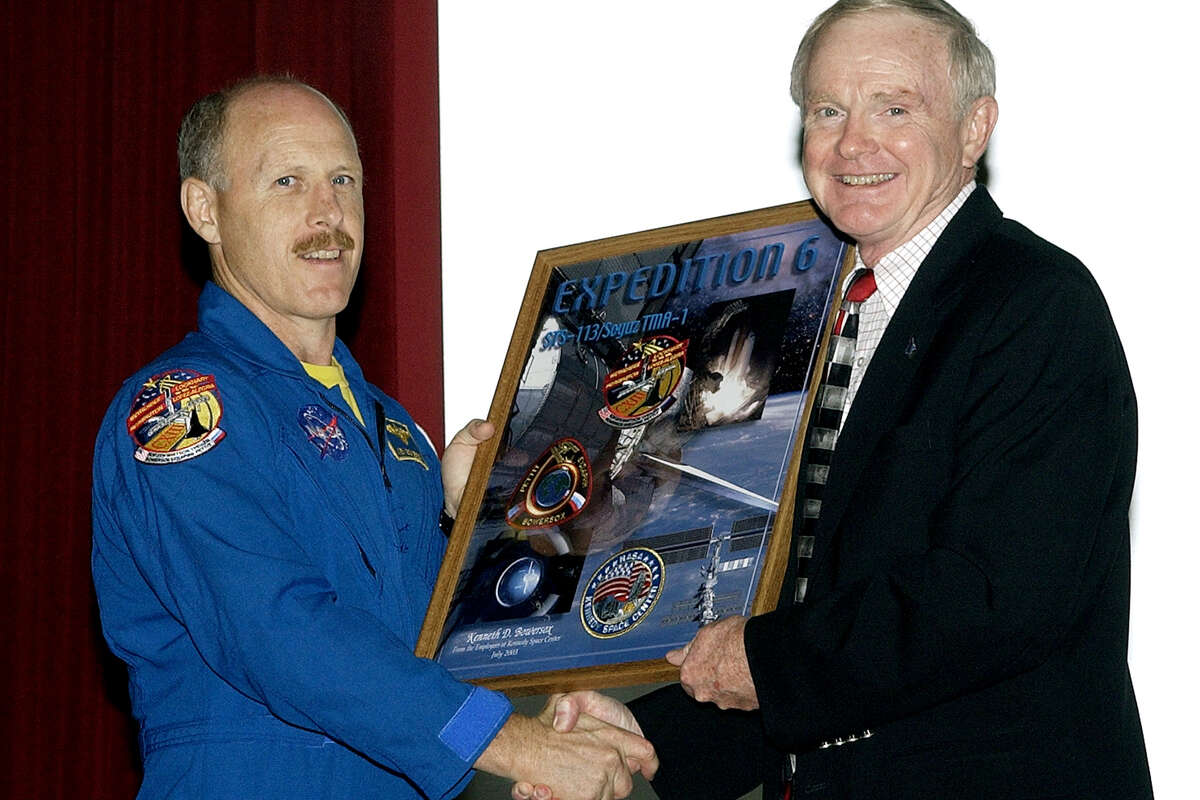Alex Stuckey July 11, 2019 Updated: July 11, 2019 6:11 p.m.

Less than 24 hours after being named head of human exploration at NASA, former astronaut Ken Bowersox said the agency is trying to speed up decision-making in its quest to reach the moon by 2024.
“The key is we need to fly when we’re ready, but if we don’t shoot for 2024 we have zero chance,” Bowersox said Thursday at the American Astronautical Society’s John Glenn Memorial Symposium. “Our attitude is to get as much of this going as we can — to move as fast as we can, as long as we can.”
Bowersox’ brief remarks in Cleveland follow the shocking announcement Wednesday night that Bill Gerstenmaier — a pillar in NASA’s human exploration operations since 2005 — was out as the agency’s associate administrator for the Human Exploration and Operations Mission Directorate.
The announcement was made in a Wednesday email to NASA employees from Administrator Jim Bridenstine.
“As you know, NASA has been given a bold challenge to put the first woman and the next man on the Moon by 2024, with a focus on the ultimate goal of sending humans to Mars,” he wrote. “In an effort to meet this challenge, I have decided to make leadership changes.”
He then named Bowersox — a 62-year-old veteran of five space shuttle flights — as Gerstenmaier’s replacement.
The decision — which surprised many in the space community — comes as NASA continues a years-long struggle to keep its human exploration plans on track. Projects such as the Space Launch System rocket being built to launch humans to the moon and the commercial crew program, meant to alleviate the country’s reliance on Russia for transportation to the International Space Station, are years behind schedule.
The human return to the moon — now dubbed the Artemis project — was initially set for 2028 but the Trump administration moved that up four years.
“Only bold decisive moves can fix the SLS/ISS/commercial crew quagmire,” NASA Watch, a website devoted to space news and run by Keith Cowing, tweeted. “If @JimBridenstine does not take full advantage of this … personnel change and start to make the difficult decisions and shift some paradigms then #Artemis will never put Americans on the Moon by 2024.”
‘He was the glue’
If Gerstenmaier knew a job change was coming, it didn’t show Wednesday morning when he testified before the House Subcommittee on Space and Aeronautics about the space station’s future.
Gerstenmaier, who began working at NASA in 1977, has overseen operations on the space station and the agency’s behemoth Space Launch System rocket, which is already billions of dollars over budget. He also was in charge of the commercial crew program and the agency’s moon 2024 plan.
The White House has been frustrated with the speed at which both SLS and the Artemis program are moving. But the abrupt change-up Wednesday night astonished the space community.
“Can’t overstate the importance of Gerst to @NASA over the past few decades. He was the glue that kept @NASA and Congress moving forward after Constellation,” former astronaut Garrett Reisman tweeted Wednesday night, referring to President George W. Bush’s plan for a moon mission.
Lori Garver, CEO of Earthrise Alliance, an organization that uses Earth data to combat climate change, echoed Reisman’s sentiments.
“End of an era & big shoes to fill,” Garver tweeted. “Whatever your view about @NASA human Spaceflight over the last 15 years – Gerst held the (reins).”
Gersteinmaier — who now will serve as special assistant to NASA Deputy Administrator Jim Morhard — was supposed to speak at the Glenn Symposium on Thursday.
Bowersox spoke in his stead and did not mention his new position in his remarks.
He did, however, discuss the plan to get to the moon by 2024.
Moving forward to the moon
NASA can get to the moon by 2024, provided it can speed up the decision making process within the organization, Bowersox said Thursday morning.
He then laid out the plan thus far, though admitted it could change.
The Artemis plan still heavily relies on the Orion spacecraft and the troubled Space Launch System rocket.
Though federal watchdogs have continued to say the rocket will not be ready to launch an uncrewed mission until mid-2021, Bowersox said NASA believes it will be ready by the end of 2020.“But we’ll launch when we’re ready,” he said.
The Lunar Orbital Platform-Gateway, the mini-space station NASA wants to build orbiting the moon, also still is part of the plan, he said.
A minimal version of the Gateway — just a propulsion and power element and a small habitation module — will be launched via commercial rockets prior to 2024, as will lunar landers, he said.
Then Artemis-2, the second Orion-SLS duo that will have crew members on board, will launch in 2024.
The U.S. has support on the Gateway with 15 international partners but they won’t begin to play a role until 2028, when NASA plans to have a continuous presence on and around the moon, he said.
He did not discuss which 15 countries would be involved, though Canada already has publicly announced that it will build a robotic arm for the mini-space station.
As always, the success of the exploration plan comes down to funding. Bridenstine said previously that NASA would need up to $30 billion to reach the moon by 2024 — amounting to $4 to $5 billion each year — but the Trump administration only has requested an additional $1.6 billion for the coming fiscal year. Congress must approve the budget and members have yet to acknowledge the request.
“We think we can afford it with current budget we’ve got,” Bowersox said. “We’re trying to take this plan step-by-step without asking for too much money.”
Alex Stuckeys writes about NASA and science for the Houston Chronicle. You can reach her at alex.stuckey@chron.com or Twitter.com/alexdstuckey.

